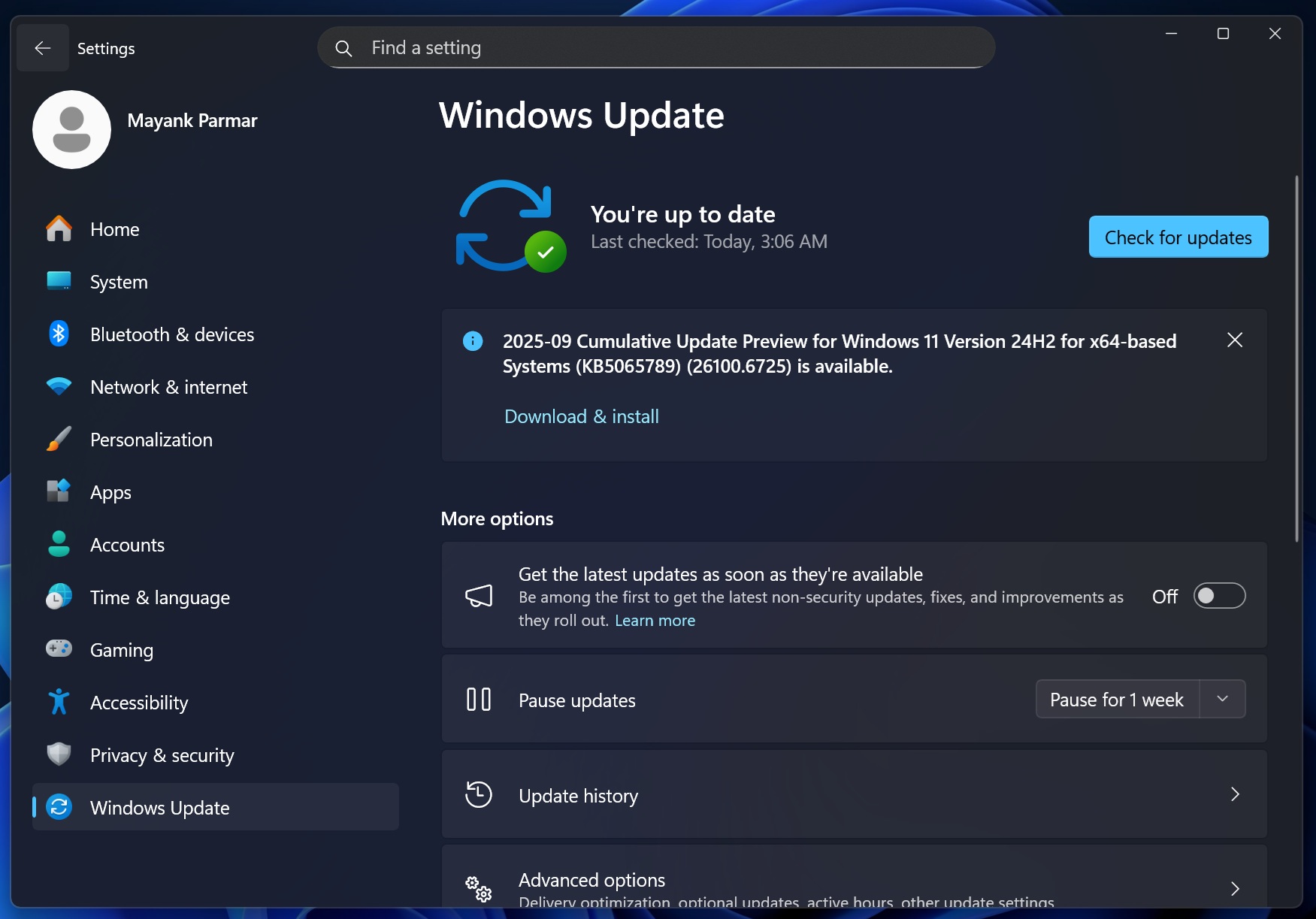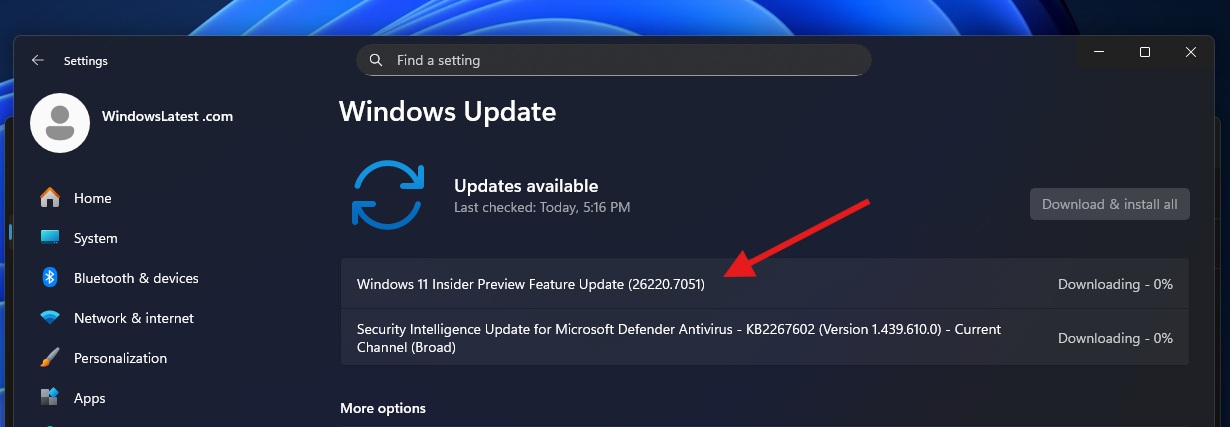When Microsoft shipped the October 2025 optional update, we noticed that it dropped the YYYY-MM format. It also dropped the “cumulative” term from the title. Now it’s certainly simpler, but more confusing than ever. IT admins are clearly unhappy with the move, and Windows Latest understands that it will also cause confusion among regular users.
| Update type | New Update Title (KB/Build numbers are examples) |
|---|---|
| Security (monthly / out-of-band) | Security Update (KB5039000) (26100.4800) |
| Preview (non-security) | Preview Update (KB5063000) (26100.4825) |
| .NET Framework — security | .NET Framework Security Update (KB5056500) |
| .NET Framework — preview | .NET Framework Preview Update (KB5056505) |
| Driver | Logitech Driver Update (123.500.2.0) |
| AI component | Phi Silica AI Component Update (KB5064700) (1.2600.100.0) |
Up until now, Windows Updates have used long titles. But a long title doesn’t necessarily mean the naming convention is confusing. Windows security updates mostly use the cumulative term and include YYYY-MM in the titles.

For example, last month’s update was called “2025-10 Cumulative Update for Windows 11 Version 25H2 for x64-based Systems (KB5066835) (26200.6899).”
Granted, the title is long and certainly not “simple,” but it clearly tells us what we’re trying to install. I don’t get confused by it. I am sure my fellow IT admins are also not upset with how long these update titles are.
There are different kinds of updates, and mostly all have had YYYY-MM in their titles.

Cumulative preview updates, which are the optional updates, released in the last week of the month, use a similar naming convention. For example, September’s optional update was called “2025-09 Cumulative Update Preview for Windows 11 Version 24H2 for x64-based Systems (KB5065789) (26100.6725).”
Again, the title is long, but it tells you everything about the Windows update and also makes it clear that it’s a “cumulative update preview,” not an Insider beta preview update.
Microsoft rolls out simplified Windows Update titles
Now, Microsoft says it’s simplifying the Windows Update titles for “improved readability.” This change is already live, and it renames the monthly cumulative updates to “Security Update (KB5034123) (26100.4747).”
While it’s simpler and easier to understand, it drops the YYYY-MM format, and takes away the OS version number.
If you think this is bad, I want you to look at the new name for optional (non-security) updates. They’re now called “Preview Update (KB5062660) (26100.4770).” Yes, seriously. Look what I have on my PC when I checked for updates:

There’s no month/year, no Windows release version (24H2/25H2), and no “cumulative” tag, which means you can’t tell if it’s the usual late-month cumulative preview and what version it targets. For normal users, just “Preview Update” sounds like a beta release and doesn’t say if it’s a security, quality, or optional update.
Now, look at the screenshot below.

The above screenshot is from a machine signed up for the Windows Insider Program (WIP). WIP allows testers to download early builds of Windows. This is a completely different game. Insider Preview updates are labelled as “Windows 11 Insider Preview Feature Update (26220.7051)”.
Thanks to Microsoft’s idea to make Windows Update titles simpler, we now have two very different things that both say “preview.” First, an optional cumulative update is now called a “Preview update.” Second, we’ve the real “preview” update, which is Windows Insider Preview Build.
With the old names, “YYYY-MM Cumulative Update (Preview) for 24H2” and “Insider Preview Feature Update” were easy to separate.
Microsoft dropped the cumulative term, date and version to simplify Windows Update titles. They’re simpler for sure, but it’ll definitely confuse regular users with the Insider Preview update.
IT admins are protesting Microsoft’s decision
IT admins are calling Microsoft’s new Windows Update titles the “dumbest” move.
As a system admin myself, I get where they’re coming from. You can’t debug a Windows Update when you don’t even know the release month or year, unless you look up support documents and verify against the hundreds of KB (Knowledge Base) IDs.
“How are admins supposed to troubleshoot Windows when you hide the crucial information from them? This is a truly terrible change, and you don’t understand your target audience,” an IT admin wrote in a response to Microsoft.
“Removing the date from the Windows Update title is not a good change for admins at all. We’ll have an even harder time immediately telling if a device is behind on updates or not,” another fuming IT admin added.
Microsoft promises Windows Update titles improvements after outrage
It doesn’t appear that Microsoft plans to drop this new Windows Update naming scheme, but a Microsoft official told me the company actively listens to feedback and more improvements will be introduced.
Microsoft also confirmed that most update titles won’t change if you use Microsoft Update Catalog or Windows Server Update Services (WSUS), at least for now. Windows 11’s feature updates, such as version 25H2, will continue to have the existing naming convention.





















